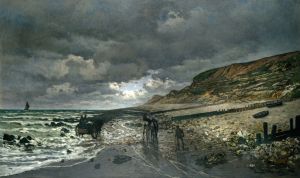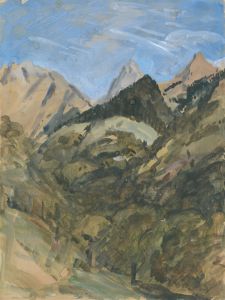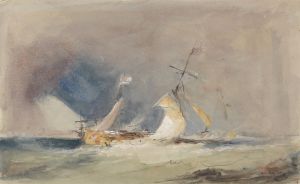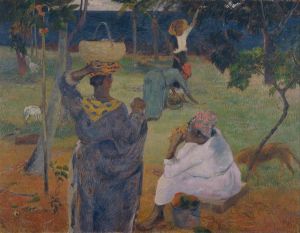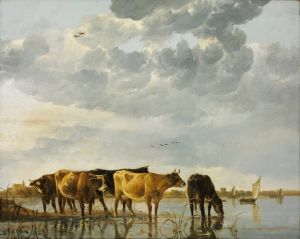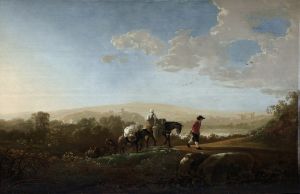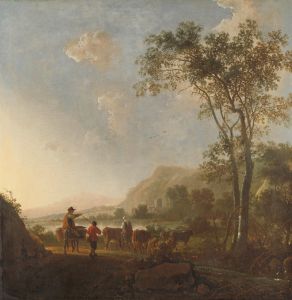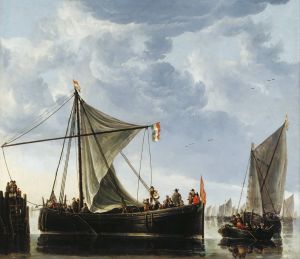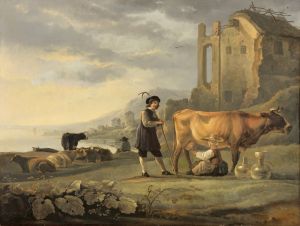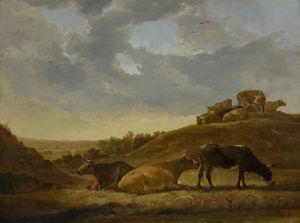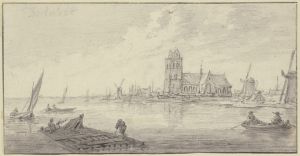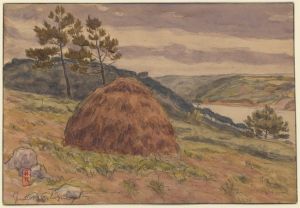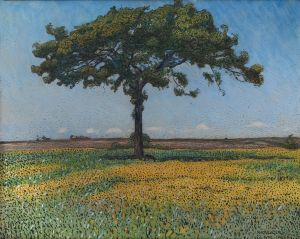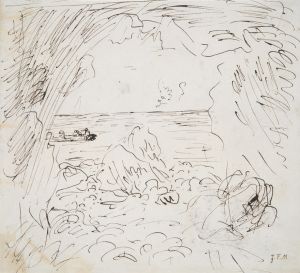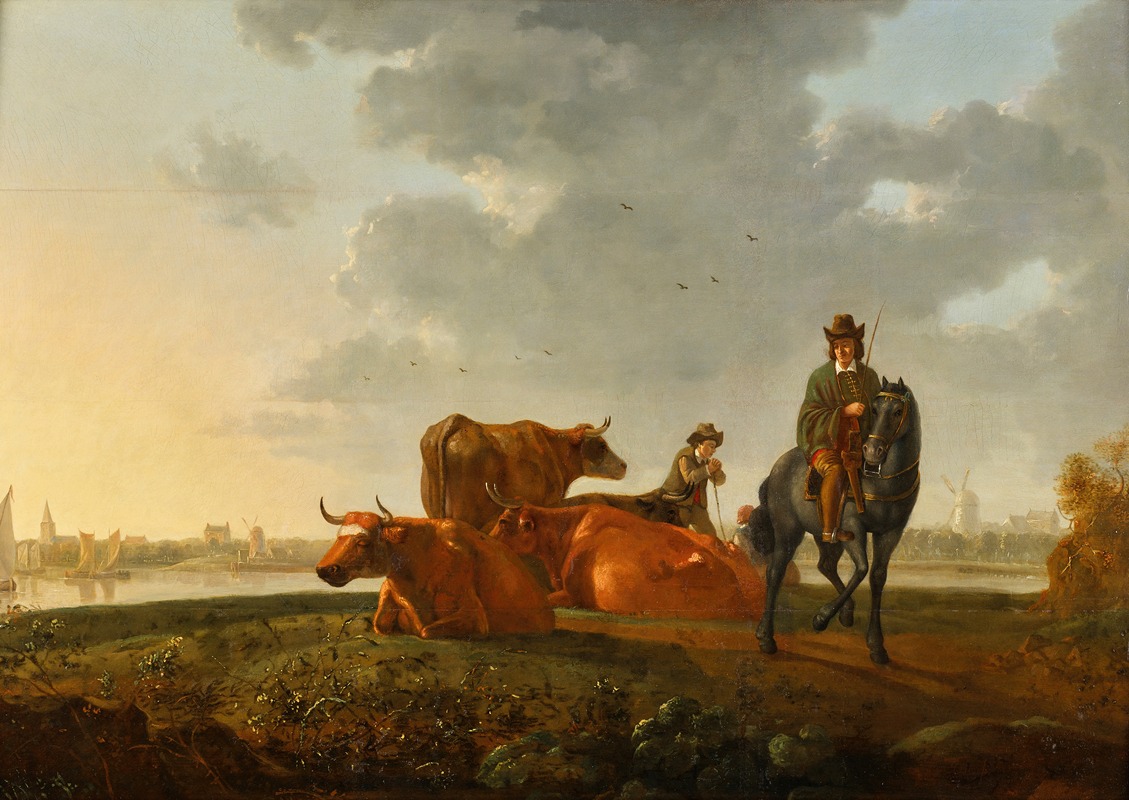
Weide am Fluss
A hand-painted replica of Aelbert Cuyp’s masterpiece Weide am Fluss, meticulously crafted by professional artists to capture the true essence of the original. Each piece is created with museum-quality canvas and rare mineral pigments, carefully painted by experienced artists with delicate brushstrokes and rich, layered colors to perfectly recreate the texture of the original artwork. Unlike machine-printed reproductions, this hand-painted version brings the painting to life, infused with the artist’s emotions and skill in every stroke. Whether for personal collection or home decoration, it instantly elevates the artistic atmosphere of any space.
Aelbert Cuyp, a prominent Dutch landscape painter of the 17th century, is renowned for his idyllic and serene depictions of the Dutch countryside. One of his notable works is "Weide am Fluss," which translates to "Meadow by the River." This painting exemplifies Cuyp's mastery in capturing the tranquil beauty of rural landscapes, a theme that was highly popular during the Dutch Golden Age.
Cuyp was born in Dordrecht in 1620, into a family of artists. His father, Jacob Gerritsz Cuyp, was also a well-known painter, and Aelbert likely received his initial training in art from him. Aelbert Cuyp's work is characterized by its luminous quality and the warm, golden light that bathes his landscapes, a technique that was influenced by the Italianate style, which was popular among Dutch artists who traveled to Italy. However, there is no concrete evidence that Cuyp himself ever visited Italy.
"Weide am Fluss" is a quintessential example of Cuyp's landscape paintings, which often feature expansive skies, gentle hills, and calm waters. The painting captures a peaceful scene by a river, with cattle grazing in the foreground, a common motif in Cuyp's work. The inclusion of animals, particularly cows, not only adds a sense of life and movement to the scene but also reflects the agrarian lifestyle of the Dutch countryside during this period.
Cuyp's use of light is particularly noteworthy in "Weide am Fluss." The painting is suffused with a warm, golden glow that suggests either early morning or late afternoon, times of day when the light is soft and diffused. This use of light not only enhances the natural beauty of the scene but also imbues it with a sense of tranquility and timelessness. Cuyp's ability to capture the atmospheric effects of light was highly influential, and his works were admired by later artists, including those of the English landscape school.
The composition of "Weide am Fluss" is carefully balanced, with the river leading the viewer's eye into the distance, creating a sense of depth and perspective. The sky occupies a significant portion of the canvas, emphasizing the vastness of the landscape and the ever-changing Dutch weather. Cuyp's attention to detail is evident in the meticulous rendering of the cattle and the foliage, showcasing his skill in both observation and technique.
During his lifetime, Aelbert Cuyp was primarily known in his hometown of Dordrecht, and it was not until the 18th and 19th centuries that his work gained widespread recognition. Today, Cuyp is celebrated as one of the leading figures of Dutch landscape painting, and his works are held in high esteem by art historians and collectors alike.
"Weide am Fluss" is a testament to Cuyp's ability to convey the serene beauty of the natural world. Through his masterful use of light, composition, and detail, Cuyp invites viewers to experience the peacefulness and harmony of the Dutch countryside, a theme that continues to resonate with audiences today.





